
BE THE FIRST TO KNOW
Subscribe to the Porto eCommerce newsletter to receive timely updates from your favorite products.
Everything you need to know about choosing, styling, and maintaining the perfect area rug for your home.
Area rugs have a unique way of transforming a space. They’re not just decorative items tossed on the floor for color or comfort, though they do that too; they're foundational elements that tie a room together both aesthetically and functionally. Whether you’re working with hardwood, tile, or carpet, the right rug adds warmth, anchors furniture, and defines how a room feels and flows.
But let’s be real: choosing the right area rug is often overwhelming. There are thousands of styles, sizes, materials, and placements to consider. This guide is designed to cut through that confusion.
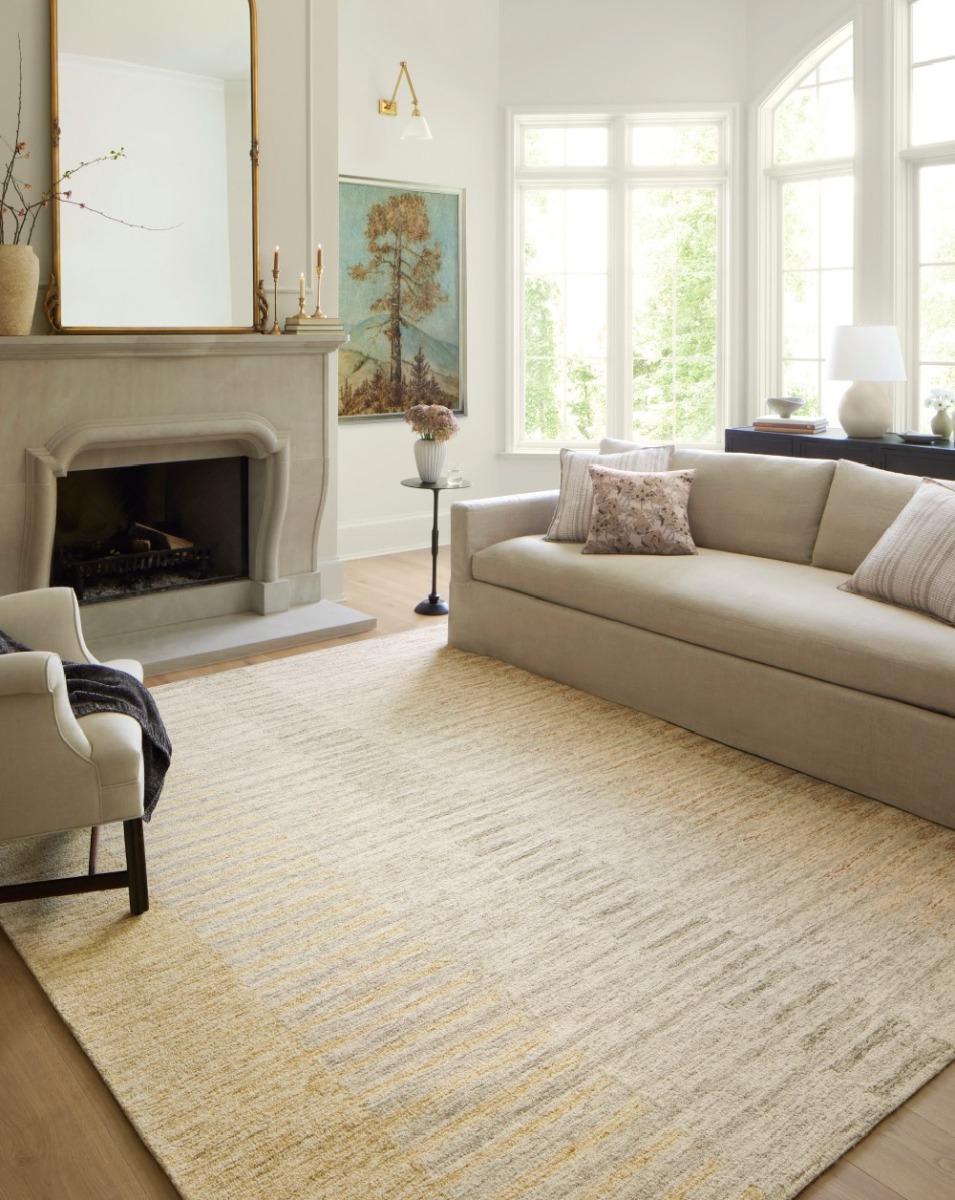
We’ll walk you through every step; from identifying the best style for your space to choosing the right size, understanding materials, cleaning tips, layering strategies, and shopping recommendations. Whether you’re a first-time buyer or replacing a rug you’ve had for years, this 2025 edition is your definitive resource.
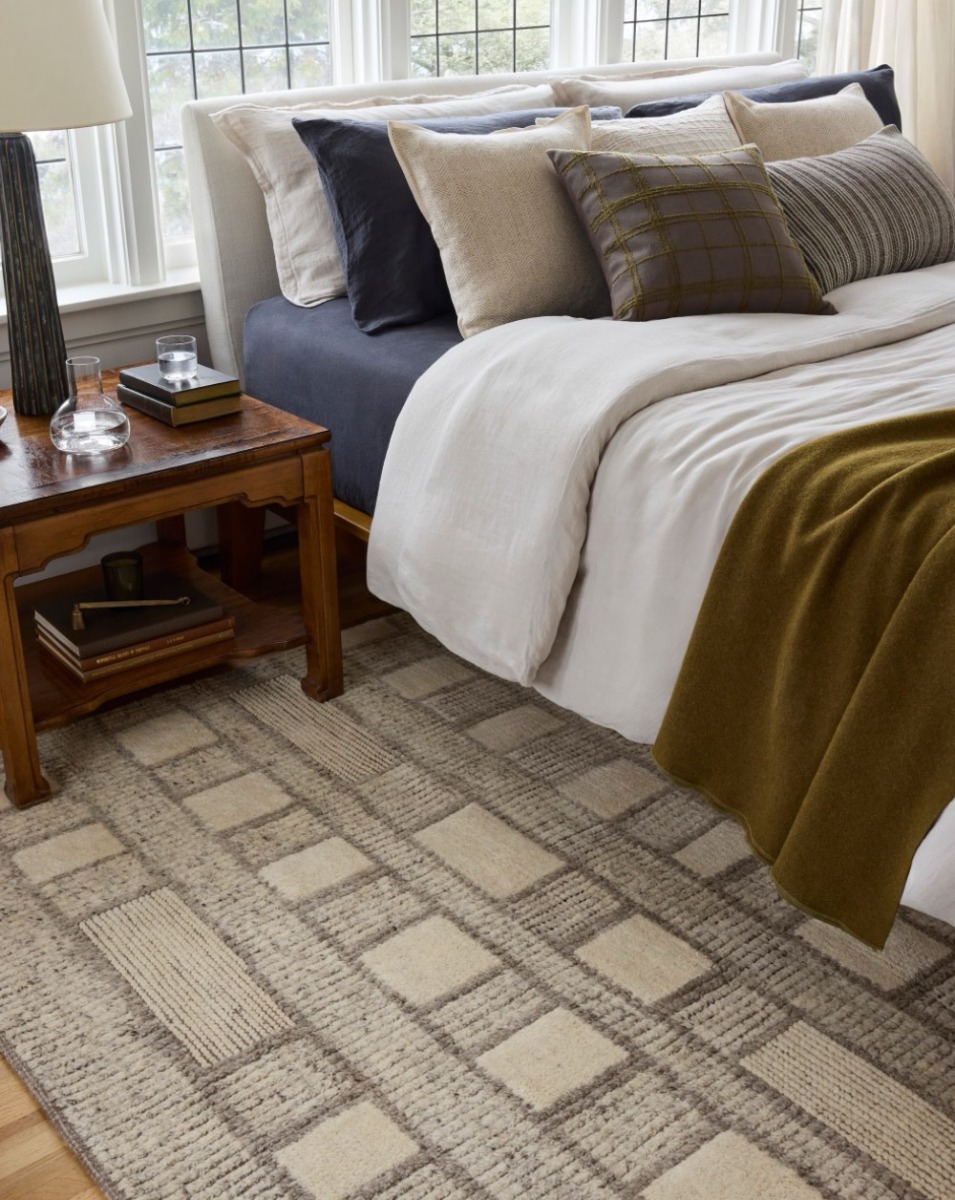
An area rug isn’t just something soft under your feet, it’s one of the most powerful design tools in your home. It defines a space, connects all the elements in a room, and even impacts how you feel in a space. Think of a rug as the visual and emotional foundation of a room. Without one, a space can feel incomplete or cold. With the right rug, everything comes together.
The beauty of area rugs is in their flexibility. You can use them to separate zones in open-concept living areas, soften echoey acoustics in hard-surface rooms, or add depth to minimalist design. A rug brings color, pattern, and personality, and you can switch it out as trends evolve or your taste changes.
Still, picking the right rug is a challenge. Should you go for a bold Persian-style piece or something clean and neutral? Wool or polypropylene? 8x10 or 9x12? What about rug pads? This guide covers all of it, helping you choose a rug that works beautifully and lasts for years.
It’s tempting to think of area rugs as an afterthought, something you choose after the furniture is in place. But in good design, rugs are often the starting point. Why? Because they ground the room literally and visually.
From a functional standpoint, rugs provide insulation, noise absorption, and comfort. In colder climates or homes with hardwood and tile, a rug adds much-needed warmth underfoot. In large rooms, they help prevent echoes. For kids and pets, they offer a safer and softer surface for everyday life.
Visually, rugs help define a space. In open-plan homes, they carve out “rooms” without needing walls. In cozier rooms, they guide the furniture layout and make everything feel intentional. Design-wise, a rug can complement your aesthetic—or become a bold focal point. Either way, it becomes a central element of your interior story.
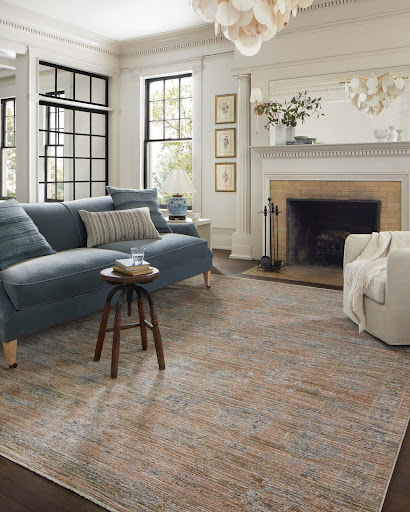
Let’s talk about layout. You’ve got your furniture arranged, but somehow the room still feels like it’s missing something. That “something” is often a rug. Without it, furniture can feel like it’s floating, disconnected from the space around it. A properly sized and placed rug ties the layout together.
In the living room, an area rug anchors the conversation zone, ensuring your sofa, chairs, and coffee table relate to one another. Depending on the size, you can float the furniture entirely on the rug or just have the front legs on it to create cohesion.
In the bedroom, a rug under the bed makes the space feel cozy and finished. You can run the rug under two-thirds of the bed, under the entire bed, or flank both sides with runners.
In dining areas, the rug should be large enough to accommodate the table and all chairs even when pulled out. This helps visually anchor the table and protect the floor from scuffs.
Even entryways, hallways, and kitchens benefit from rugs. Runners can add visual flow, absorb impact, and offer color to otherwise narrow or high-traffic areas.
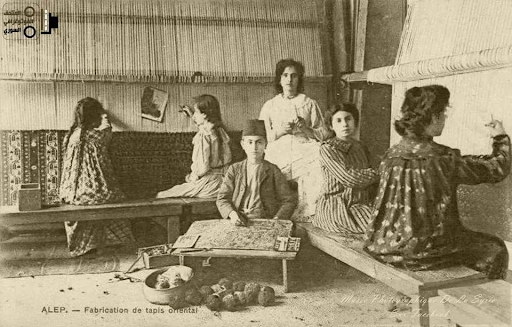
Rugs have existed for thousands of years and have always been deeply intertwined with culture, craftsmanship, and status. The oldest known rug, the Pazyryk carpet dates back to the 5th century BCE and was discovered in Siberia. It showcases a complex weave and decorative motif that wouldn’t look out of place in homes today.
Across time and geography, rugs have been used for ceremonial purposes, as family heirlooms, and as markers of cultural identity. In Persian culture, handmade rugs are a symbol of art and tradition, often taking months or even years to produce. Turkish, Moroccan, and Navajo rug-making traditions each tell a unique story through symbols, techniques, and dyes.
Today, the rug industry still draws heavily on these traditional roots. Many high-end rugs are hand-knotted in villages that have passed techniques down for centuries.
Meanwhile, machine-made rugs make these styles more accessible, giving homeowners a chance to bring cultural patterns and stories into their own living spaces.
In a world of fast design, area rugs are one of the few items that still hold a deep connection to human hands, history, and heritage.
Now that you understand why rugs matter, let’s dive into aesthetics. The style of a rug can influence the entire tone of a room. Choose wisely, and it will either seamlessly blend with your décor or boldly stand out as a statement piece.
Rug styles fall into three main categories: traditional, contemporary, and transitional. And within those, dozens of sub-styles, color palettes, and weaves exist. Let’s break it down.
Area rug styles have evolved dramatically in the past decade. What used to be limited to classic Persian or basic solid-color options has exploded into a world of textures, artistic prints, bold geometrics, and minimalist neutrals. Let’s explore the main categories and current trends.
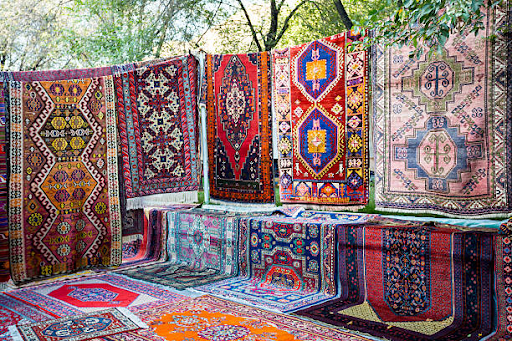
Traditional rugs are rooted in history. Their patterns often include floral motifs, ornate medallions, or borders inspired by Persian, Oriental, or European designs. These rugs bring a sense of elegance and formality, often working beautifully in living rooms, studies, and dining areas.
The hallmark of traditional rugs is their symmetry and use of rich, saturated colors: burgundy, navy, forest green, gold. Many are hand-knotted or power-loomed to mimic ancient weaving techniques.
These rugs work best in classic or transitional spaces. If your furniture leans traditional, think tufted sofas, carved wood, or antique details a traditional rug enhances the theme. But don’t be afraid to mix styles: traditional rugs in modern rooms can add depth and character through contrast.
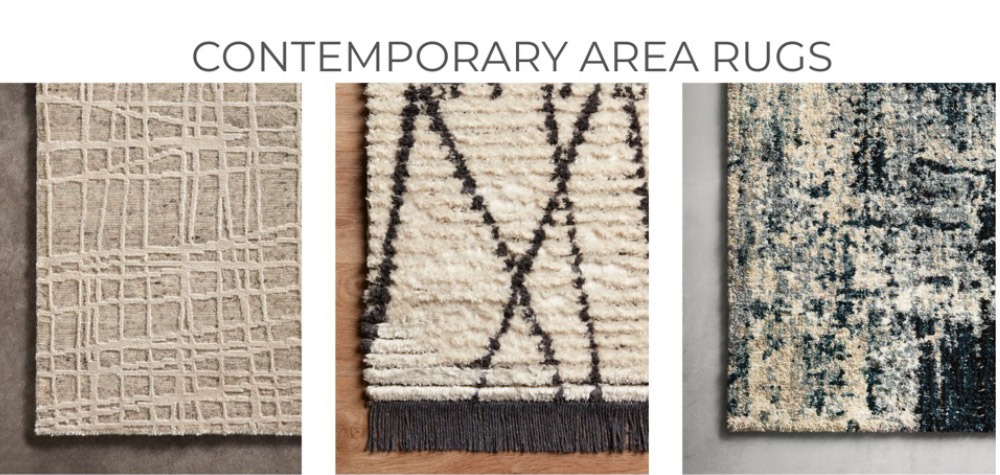
Contemporary rugs embrace clean lines, bold graphics, and artistic patterns. You’ll find everything from abstract brushstrokes to asymmetrical geometrics, color-blocking, and distressed finishes. These rugs thrive in spaces where you want energy, creativity, or a touch of the unexpected.
Popular materials include synthetics like polypropylene or viscose blends, which allow for brighter colors and varied textures. Low-pile rugs in this category are common and practical, especially in high-traffic areas.
Contemporary styles often favor greys, blacks, whites, and pops of teal, mustard, or coral. They’re ideal for modern lofts, minimalist living rooms, and eclectic spaces with mixed materials like glass, concrete, and metal.
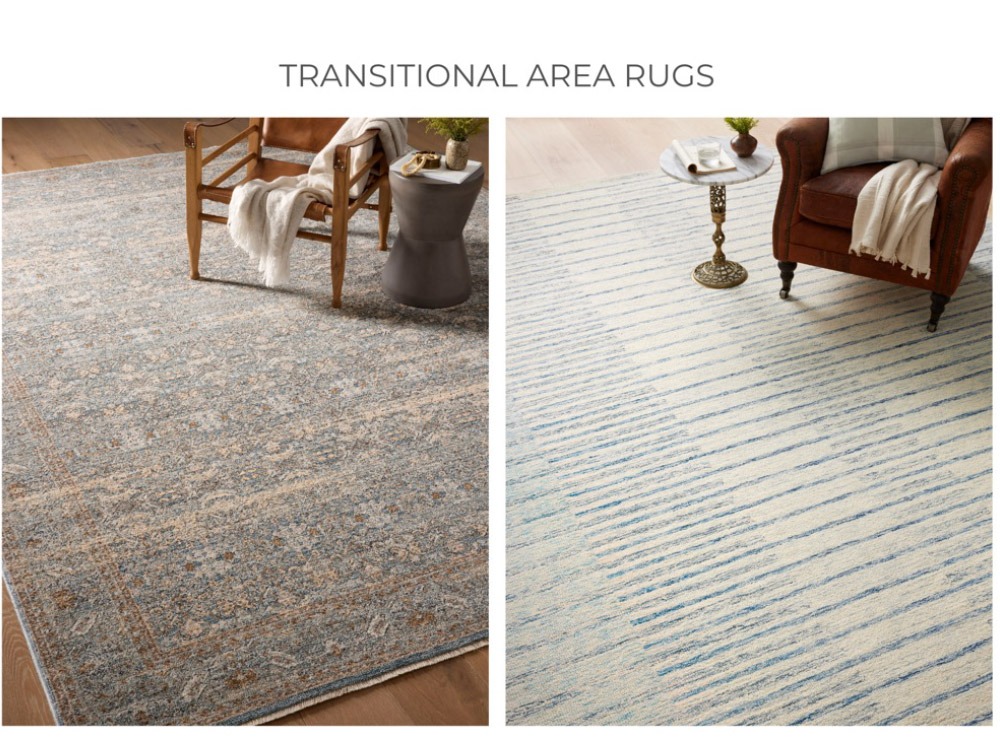
Can’t decide between traditional and modern? Transitional rugs blend the elegance of classical patterns with a modern twist. They often use muted color palettes; soft greys, creams, and beiges with traditional motifs that are lightly distressed or over-dyed for a faded, updated look.
Transitional rugs are hugely popular because they adapt easily. They’re the go-to for homeowners who want timeless design without feeling outdated. They also work well with farmhouse, industrial, and even boho styles.
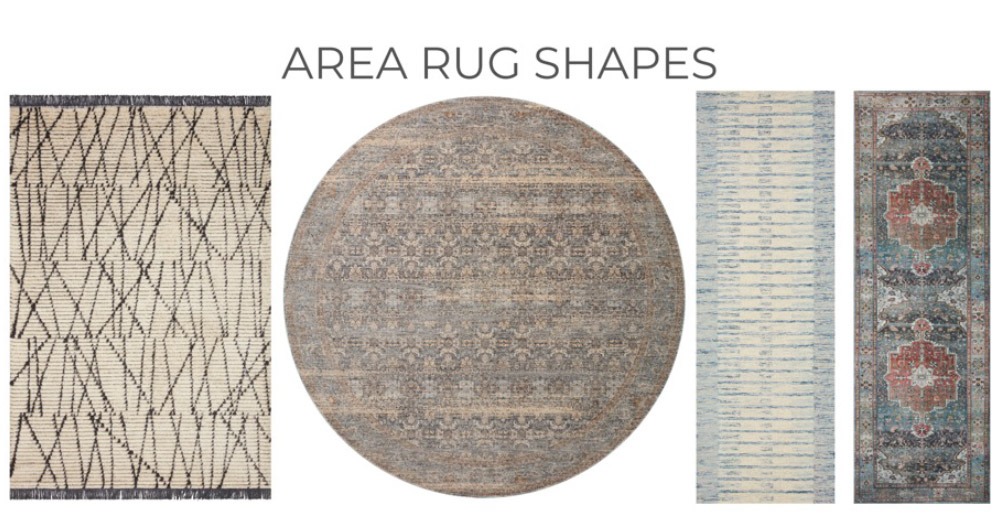
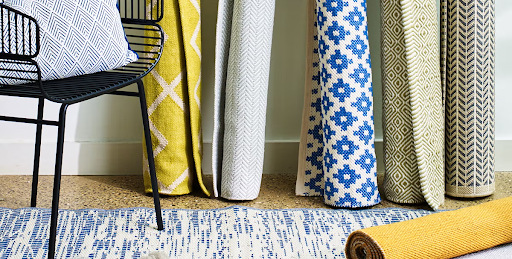
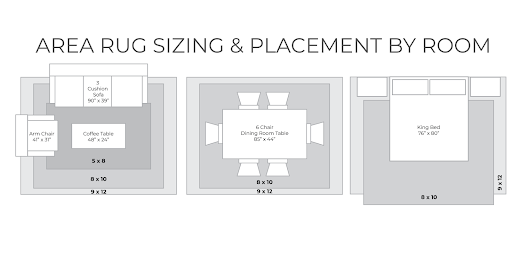
Choosing the right size rug is just as important as choosing the right style. Too small and the rug looks like an afterthought. Too large and it can overwhelm the space—or worse, eat up your room’s proportions. So let’s break it down by room and function.
If you have a small living room or a layout where furniture is against the wall, a 5x8 or 6x9 rug placed under the coffee table (with front legs of sofas/chairs touching the rug) can help create a cozy zone. It won’t fully anchor the furniture, but it adds definition and comfort.
The sweet spot for most living rooms. This allows you to place the front legs of all major pieces (sofa and chairs) on the rug while still showing some flooring around the perimeter. It ties the room together without overwhelming it.
Ideal for open-plan living spaces or larger rooms. All furniture sits entirely on the rug, making the space feel cohesive and luxurious. This layout works best when your rug size matches the scale of your seating arrangement.
A good rule of thumb: your rug should extend 24–30 inches beyond each side of the dining table, so chairs remain on the rug even when pulled out. Most dining areas do best with an 8x10 or 9x12, depending on the table size.
Avoid rugs that are too small. Nothing looks more awkward than chair legs half on, half off the rug.
Material determines how a rug looks, feels, performs, and lasts. Some are ultra-soft, others super durable. Some are natural, others synthetic. Here’s your guide:
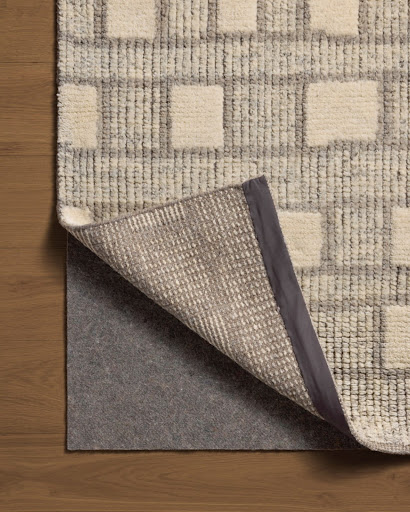
The Gold Standard: Wool is the most popular high-quality rug material for a reason. It’s soft, durable, naturally stain-resistant, and ages beautifully. Hand-knotted wool rugs can last for generations.
Ideal For: Living rooms, bedrooms, dining areas anywhere you want luxury and longevity.
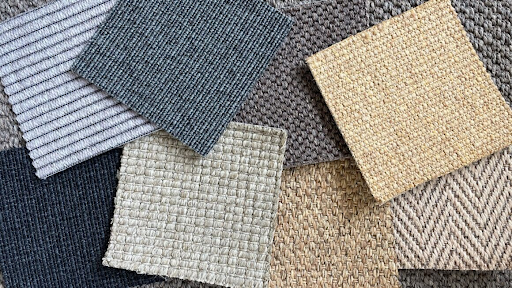
Affordable & Family-Friendly: These are budget-friendly, easy to clean, and come in endless designs. Polypropylene is moisture-resistant, nylon is ultra-durable, and polyester offers vivid colors.
Ideal For: High-traffic areas, homes with kids or pets, outdoor spaces.
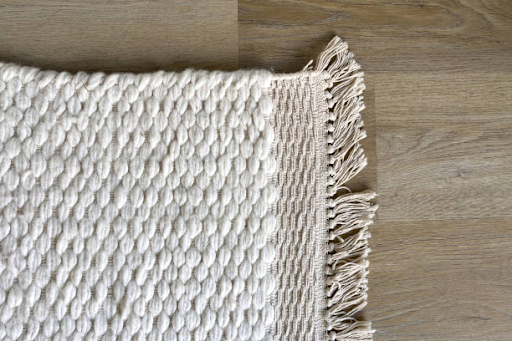
Lightweight & Washable: Soft and breathable, cotton rugs are perfect for casual spaces. They’re typically flat-woven and reversible, though they wear faster than wool.
Ideal For: Kitchens, kids’ rooms, entryways, or anywhere you want a soft but washable option.
Earthy & Textural: Natural fiber rugs bring in organic texture and neutral tones. Jute is softer; sisal is rougher but more durable. Most are affordable but not always the most comfortable underfoot.
Ideal For: Farmhouse or coastal styles, casual living rooms, layering beneath printed rugs.
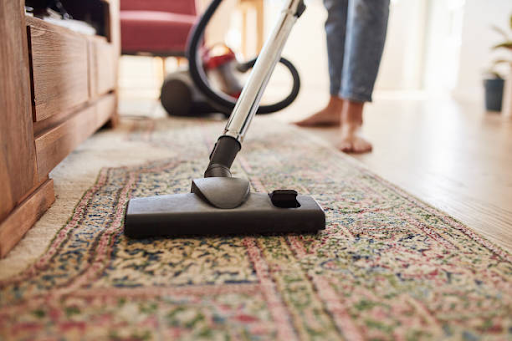
Keeping your rug looking great doesn’t have to be complicated, but it does require consistency.
Each has its pros and cons, here’s how to decide:
Pros:
Cons:
Pros:
Cons:
Pro Tip: Browse online to narrow your choices, then visit a local store to see similar styles in person. Or order a small swatch before committing.
The right area rug doesn’t just complete a room, it grounds it. It adds texture, warmth, and personality. It ties your furniture together, enhances your color scheme, and gives your space soul.
Whether you’re shopping for a modern flatweave or a plush, hand-knotted heirloom, this guide should help you navigate the process with confidence.
Start with the feel you want. Work outward from your rug. Choose the size and shape that makes your room make sense. And never underestimate what one good rug can do to elevate your entire home.